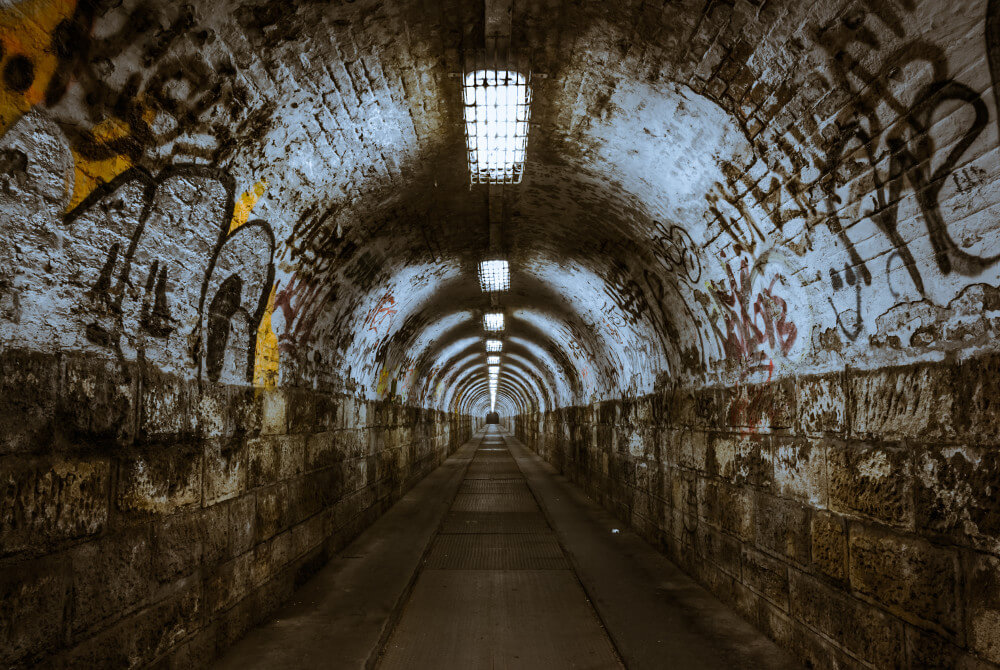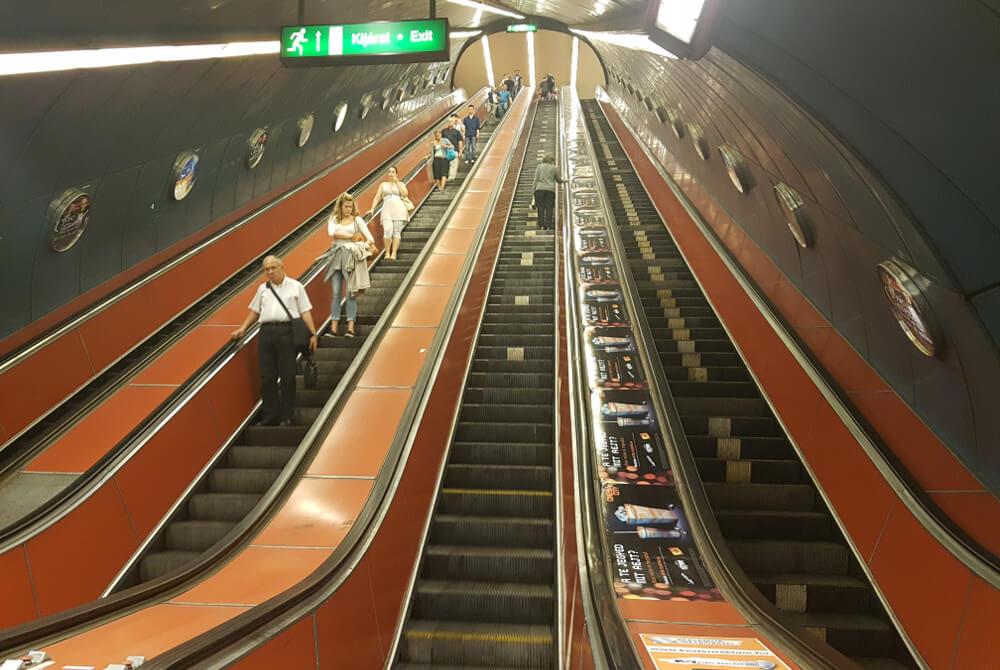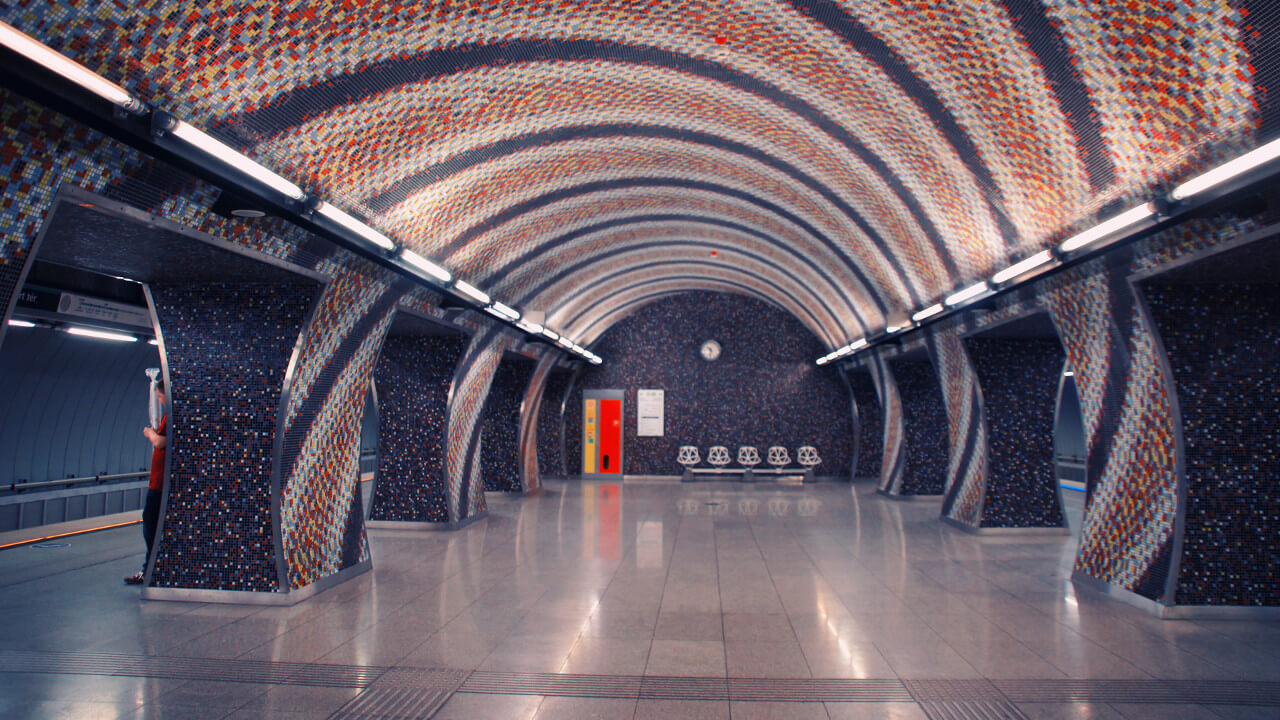Metro Budapest – The route network
If you count the “Tünel” funicular in Istanbul as a fully-fledged metro, the Budapest Metro is the third oldest metro system in the world. The route on which the M1 line runs today was opened in 1896 in honor of the thousand-year conquest of the Hungarians. Even though the metro in Budapest is one of the oldest networks in the world, the “Budapest Metro Map” has not expanded to the same extent as in Istanbul or London. The four lines M1, M2, M3 and M4 currently run on a total route length of 38.3 kilometers and serve 52 subway stations, only three of which are not underground. The metro lines on the “Budapest Metro Map” can be identified both by the “M” in front of them and by a unique color. This prevents confusion with other means of transportation.
The Budapest metro lines at a glance
- M1 (Vörösmarty tér ↔ Mexikói út)
- M2 (Déli pályaudvar ↔ Örs vezér tere)
- M3 (Újpest-Központ ↔ Kőbánya-Kispest)
- M4 (Kelenföld vasútállomás ↔ Keleti pályaudvar)
Information for tourists about the metro in Budapest
Even though the metro network in Budapest is very small compared to other systems in cities such as Berlin, Vienna or New York, the Budapest metro takes well over 800,000 passengers from A to B every day. As the metro is also a very effective way of avoiding the usual traffic jams in the Hungarian capital, it is very popular with commuters and tourists alike.
In addition to the M3 line, the M4 line, which only opened in 2014, has been particularly hard hit by this boom. This is hardly surprising, as the metro plan in Budapest is designed in such a way that important sights such as the Parliament, the Museum of Fine Arts, Gellert Hill and the shopping mile on the Pest side of the city are much easier to reach using the M3 or M4.
Budapest Metro Tickets & Prices
Anyone taking the metro in the Hungarian capital for the first time will certainly be wondering how much a metro ticket costs in Budapest, what fare zones there are and what area of validity the purchased tickets have. Fortunately, the ticket and fare system in Budapest is very simple and therefore tourist-friendly. The only real challenge is therefore the conversion from euros to the local currency, Florint.
One euro is currently equivalent to around 310 florints. In practice, Budapest does not have complex fare zones, but instead relies on flat-rate tariffs. A one-way ticket is therefore valid for the entire journey in one direction, regardless of how many stops the journey includes. However, if you know that you will only be traveling a short distance with a maximum of three stops, you can purchase a discounted short-distance ticket.
As an alternative to one-way tickets, which also entitle the holder to change trains in the same direction, the operating company BKK also offers 10-trip tickets and season tickets with a validity period of 24 hours to one year. For tourists who are staying in the city on the Danube for several days and would like to visit one or two museums, the Budapest Card is recommended.
This is valid for 24 to 120 hours and entitles the holder to use all public transport including the subway. There are also extras such as attractive discounts on admission to over 60 museums in the city, a free city tour, discounted meals in restaurants and a downloadable audio guide.
The most important metro tickets in Budapest
| Ticket | Prices | Buy a ticket |
|---|---|---|
| Single ride (Short way) | 300 HUF | available on-site |
| Single ride | 350 HUF | available on-site |
| 10-trip ticket | 3.000 HUF | available on-site |
| Group ticket (24h) | 3.300 HUF | available on-site |
| Daily ticket (24h) | 1.650 HUF | available on-site |
| Budapest Card (24h) | 5.500 HUF | available on-site |
| Budapest Card (48h) | 8.500 HUF | available on-site |
| Budapest Card (72h) | 10.900 HUF | available on-site |
In Budapest, the metro ticket is typically purchased directly from one of the ticket machines located at every metro station near the metro map. Travelers should make sure they have enough small change with them, especially when using the older M1, M2 and M3 lines, as not all stations have converted their machines to accept credit and debit cards. Alternatively, travelers can also buy their metro ticket in Budapest at the service counters at the stations and in numerous small kiosks.
The Budapest Card is also available there if it has not already been ordered via the online service. Tickets are validated at the ticket validators located directly at the stairs or escalators at the entrance to the platforms. There are currently still two types of validators in use. While the old devices (red) require manual validation using a lever, the modern devices (yellow or orange) do this completely automatically using a light signal. Fare dodging should be avoided, as random checks in the Budapest metro are the rule rather than the exception. In view of the low prices for a subway ticket, the risk is not worth it.
Metro timetable in Budapest
Both on weekdays and at weekends, the metro timetable in Budapest provides for a continuous service from around 4:30 am to midnight. During this time, there is a 3-5 minute interval on all lines during peak times between 8:00 am and 8:00 pm. Outside this period, the interval between two trains increases to 10 minutes. From 0:00 a.m., however, the subway service is suspended.
Night owls are therefore dependent on either cabs or the night bus routes, which run until around 4:30 am. Additional security is provided on the night buses by an accompanying security guard.
To the timetables of the Budapest metro lines:
Further information on the Budapest metro
Following the completion of the M4 line, Budapest has begun to plan the further expansion of the subway network in order to cope with rising passenger numbers and to open up further areas. High priority is currently being given to the expansion of the M3, for example, which is to be equipped with a line to the airport. In addition, a fifth line is already being planned, which will add a connection between the center of Pest and the northern edge of Buda to the Budapest Metro Map in the future.
There is a small museum in the tunnel system of the Budapest subway, which is dedicated to the history of the historic metro. In addition to display boards and showcases that tell the story of the original construction in 1896 and the modernization in 1973, there is also an original carriage from the first subway from the 19th century. If you don’t want to miss out on this piece of transport history, pay a visit to the museum on Deák Square.





